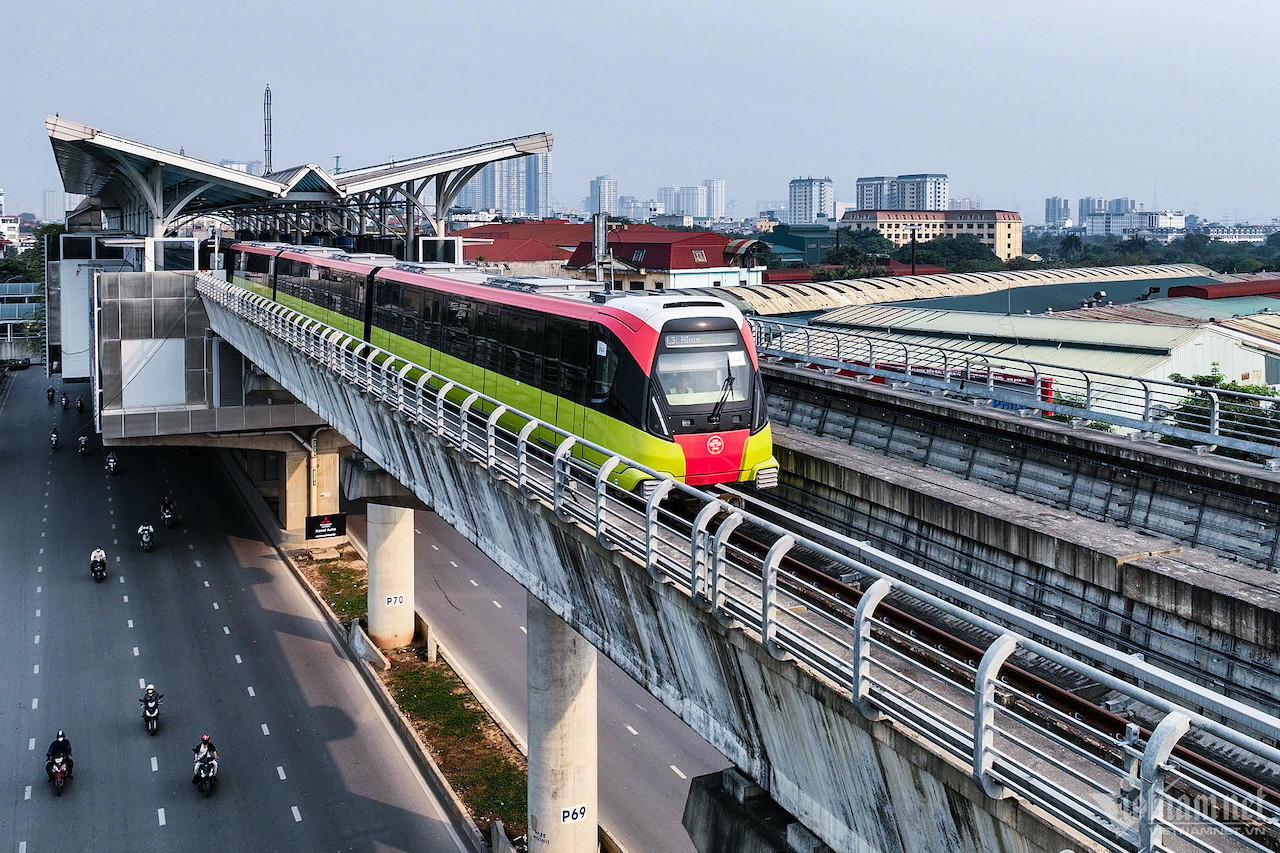
The Hanoi People’s Committee has sent a document to the Ministry of Transport about the draft plan to build an urban railway network in the capital city.
The investment phases and capital mobilization until 2035 aim to help complete the network according to Hanoi’s transportation planning approved in the PM’s Decision 519.
The investment scenario is built on five principles, and Hanoi has designed three investment phases.
It is expected that by 2030, Hanoi will complete the execution of 96.8 kilometers of 1,435mm of double-track urban railway and carry out investment preparation work for 301 kilometers, with an estimated investment capital of about $14.602 billion.
If this goal is gained, urban railways will handle 7-8 percent of public passenger traffic and 2.2-2.6 million trips per day.
By 2035, Hanoi will complete the construction of 301 kilometers of the planned 1,435mm urban railway. If construction is completed as scheduled, the urban railway will undertake 35-40 percent of public passenger transport and implement 9.7-11.8 million trips per day after 2035.
Meanwhile, the 206.1 kilometers of 1,435mm urban railways have been added in the revised overall capital city development planning.
According to the Hanoi People’s Committee, the ‘one plan, three phases’ plan has some advantages – reaching the goal of completing the urban railway network by 2035 as stipulated in Conclusion 49; and satisfying demand for public passenger transport by 50-55 percent. However, the large workload will require a high concentration level of resources.
In addition, the plan requires huge capital which must be arranged within short time, therefore, the difficulties in capital arrangement are anticipated. Meanwhile, the operation and maintenance costs will burden the budget after the entire network is put into commercial operation.
Completing the plan of building urban railway infrastructure as mentioned in the draft master plan on building and developing the urban railway network is a huge challenge, requiring a comprehensive groundbreaking approach in capital mobilization and execution, according to Hanoi’s leaders.
Head of the Institute of Planning and Development Research Dang Huy Dong said that completing the entire urban railway network within 12 years proves to be a heavy task and even might be impossible if the TOD (transit oriented development) model, i.e developing urban areas in accordance with public transport planning, is not implemented.
N. Huyen